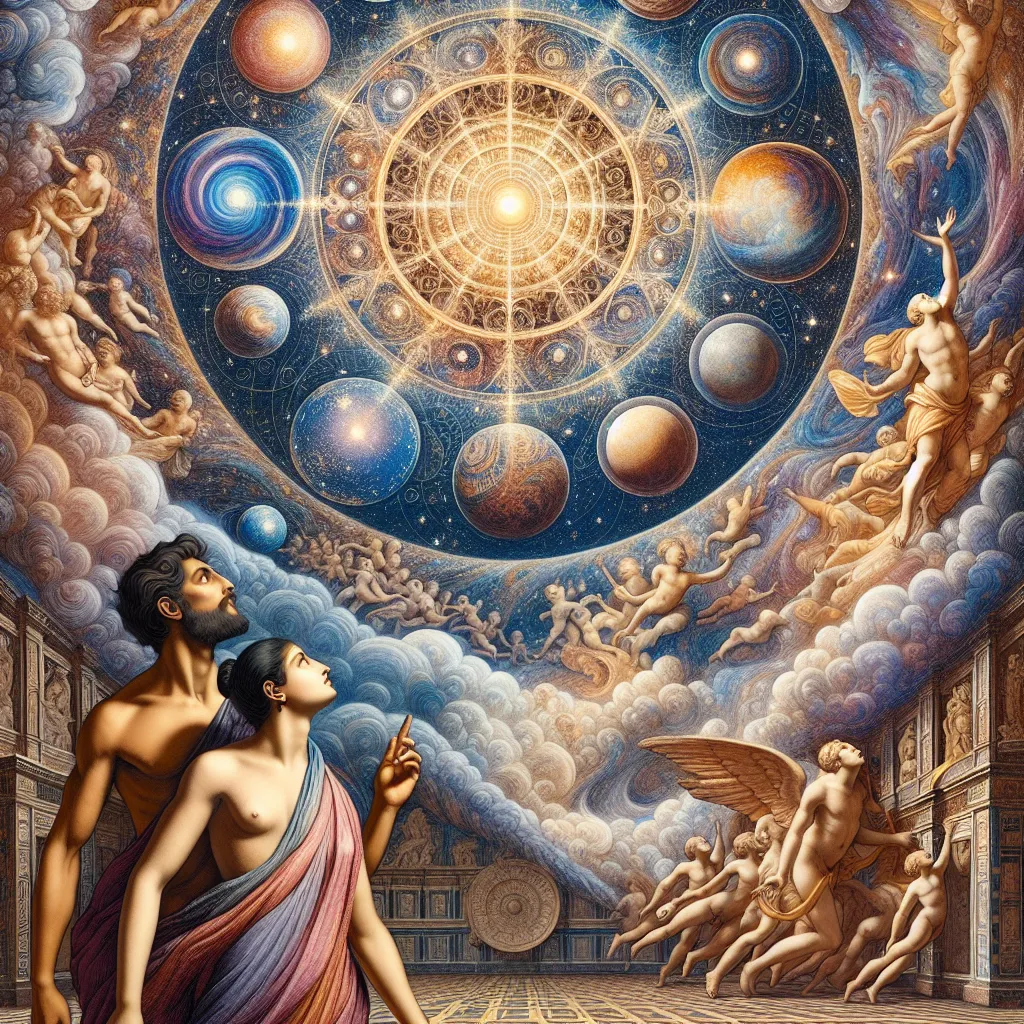
- Published on
- Authors

- Name
- You
The Concept of Brahman: Understanding the Ultimate Reality
The concept of Brahman stands as one of the most profound philosophical assertions in Hinduism. It transcends mere religious dogma, presenting itself as a pivotal idea in understanding existence and consciousness. Interwoven with both metaphysical musings and scientific inquiries, Brahman challenges us to reconsider the nature of reality.
Understanding Brahman
In Hindu philosophy, Brahman is the unchanging, infinite, immanent, and transcendent reality which is the divine Ground of all things in this universe. Derived from the Vedic tradition, particularly the Upanishads, Brahman is often described in the following ways:
- Nirguna Brahman: Brahman without attributes or forms.
- Saguna Brahman: Brahman with attributes and forms, often worshipped in various deities like Vishnu, Shiva, and Devi.
Key Characteristics of Brahman
To comprehend Brahman more deeply, we can delineate its principal qualities:
| Attribute | Description |
|---|---|
| Immanence | Present within the material world and within every individual soul (Atman). |
| Transcendence | Beyond all physical forms, not limited by space and time. |
| Immutable | Unchanging, eternal, and permanent. |
| Infinite | Limitless in every sense, both qualitatively and quantitatively. |
Scientific Correlations
Intriguingly, the idea of Brahman aligns with several modern scientific notions about the cosmos and consciousness.
Quantum Mechanics and Non-Locality
Quantum physics unveils a universe where particles can be entangled across vast distances, exhibiting a form of non-locality that resonates with the all-pervading presence of Brahman. The concept of a unified field, where all forces of nature are expressions of a single fundamental entity, finds a metaphorical reflection in Brahman's unity.
The Holographic Principle
The holographic principle suggests that the entire universe can be seen as a two-dimensional information structure "painted" on the cosmological horizon. This idea parallels the Hindu teaching of Maya (illusion), which posits that the phenomenal world is a projection of the ultimate, single reality - Brahman.
Mystical and Philosophical Implications
The Oneness of Atman and Brahman
A cornerstone of Advaita Vedanta philosophy is the assertion "Tat Tvam Asi" (Thou art that), professing the oneness of the individual soul (Atman) and the ultimate reality (Brahman). This non-dualistic standpoint provides a profound existential insight:
- souls Immortality: Understanding that our essence is eternal and unchanging.
- Universal Brotherhood: Realizing all beings share the same ultimate essence fosters a sense of unity and empathy.
Consciousness: The Inner Light
Modern neuroscience strives to understand consciousness, often described as the "Hard Problem." Brahman, as the source of all consciousness, invites us to explore consciousness not just as a byproduct of neural activity but as a primary aspect of reality itself.
Meditative Practices to Realize Brahman:
- Jnana Yoga: The path of knowledge, studying scriptures, and contemplative meditation.
- Bhakti Yoga: The path of devotion, engaging in worship and love for the divine.
- Karma Yoga: The path of selfless action, performing one's duty without attachment to outcomes.
- Raja Yoga: The path of meditation, mind control, and discipline.
Each path provides practical methodologies to transcend ordinary experiences and perceive the ultimate reality.
Conclusion
The concept of Brahman bridges the mystical and the scientific, urging us to look beyond the superficial and recognize a profound underlying unity. By blending ancient Hindu wisdom with contemporary scientific insights, one can approach an enriched understanding of existence and consciousness. Brahman, as the ultimate reality, remains a topic of perpetual inquiry and reverence, inviting seekers from all walks of life to explore the depths of their own being and the cosmos at large.
